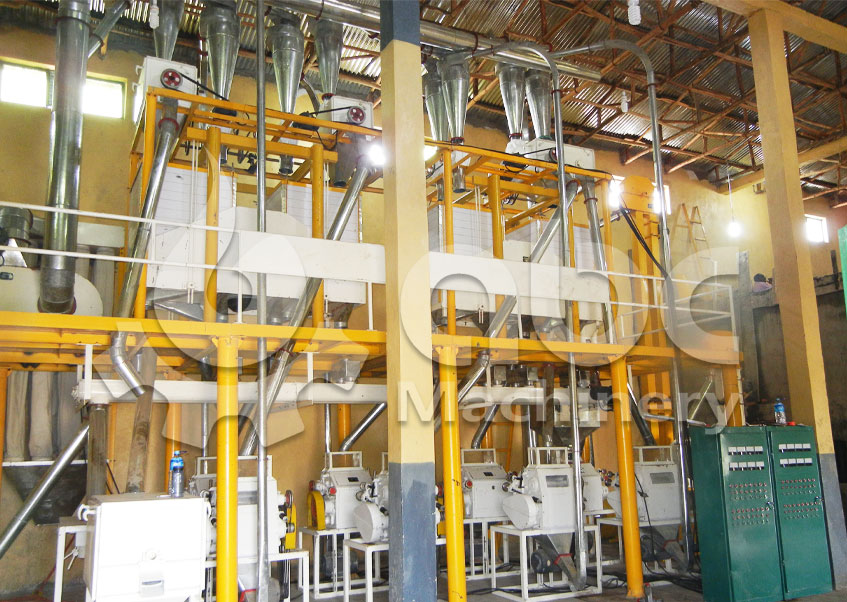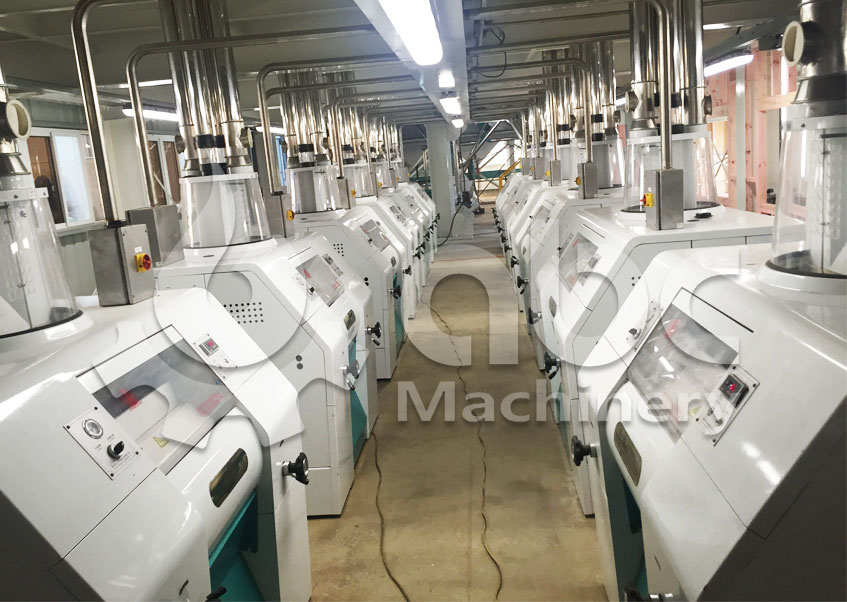Will it be steel structure flour mill? concrete structure or a combination of the two? More often than not, when making a decision of the type of flour mill to go for, the structural material question arises. Be it an expansion or new flour mill plant construction, one has to choose.
Such a decision is best made if one fully understands the difference between the two types of flour mills. Next, we will describe to you the differences between the two types of flour mill factory building structures in the following aspects , so that you can make the right decision to start a profitable flour mill business.
Conventional steel structure flour mill construction is cheaper compared to concrete flour mill. As a matter of fact, concrete mill construction requires time, increased labor and multiple materials that inflate its costs. The process involved in setting up concrete flour mills is also largely complicated by the dynamic processes involved. Ultimately, the cost implications of concrete flour mills are bound to be high.
Additionally, concrete flour mills are bound to require larger space compared to the steel flour mills. It is also important to mention that while steel structures are flexible and exhibit good behavior in case of high impact, concrete structures are less flexible and likely to fail in case of high impact. In general, steel flour mills would entail lower cost, easy and speedy constructions and most importantly, it can be easily expanded. In contrast, concrete steel flour mills are overly expensive, require longer duration to construct and offer limited capabilities for expansion of overhead bin.


It is also worth mentioning that for steel silos it is not a requirement for the soil to be too firm to be able to support the structure’s weight. In contrast, there are instances where steel silos can be constructed on land that lacks higher load-bearing capacity as is the case for concrete flour mills. Steel can be quickly erected in addition to the fact that due to its dryness, it requires lesser labor compared to concrete structures. Additionally, steel structural frameworks are comparatively lighter compared to steel structures. This coupled with other factors makes it possible to make cheaper foundation for steel structure flour mills. Additionally, steel structures are simpler and easier to modify compared to concrete structures.
Sadly, unlike concrete flour mills, steel flour mills have a reduced lifetime, limited bin sizes and in many instances, have limited capacity of production. Further, steel flour mills require increased and regular maintenance needs. In contrast, the lifespan of a concrete flour mill is longer, offers higher production capacity and requires lesser maintenance requirements.
In general, steel structure flour mills are cheaper, easier to install and modify and most importantly, are highly flexible. In contrast, while highly durable, concrete flour mills are more expensive, difficult to construct and can be easily damaged through crack propagations. Nonetheless, steel structures require regular maintenance. Based on this, it would be easily to argue that based on the tradeoffs involved, steel flour mills are a better alternative where durability is not primary basis of decision making. It will not only be quicker and easier to install, but will take lesser, time, labor and most importantly, offer greater flexibility. Further, in case there is need to move the flour mill in future, the concrete one would be almost impossible to move compared to its steel counterparts that would only entail moving its components and reassembling. However, concrete flour mills are suitable where durability is highly valued and lesser maintenance commitments are required.
Global estimates indicate that up to 85% of steel are recycled at the end of their life cycle. Recycling steel allows for energy savings. Additionally, CO2 emissions are lowered. In contract, concrete’s embodied production energy is higher and so is the CO2 release.